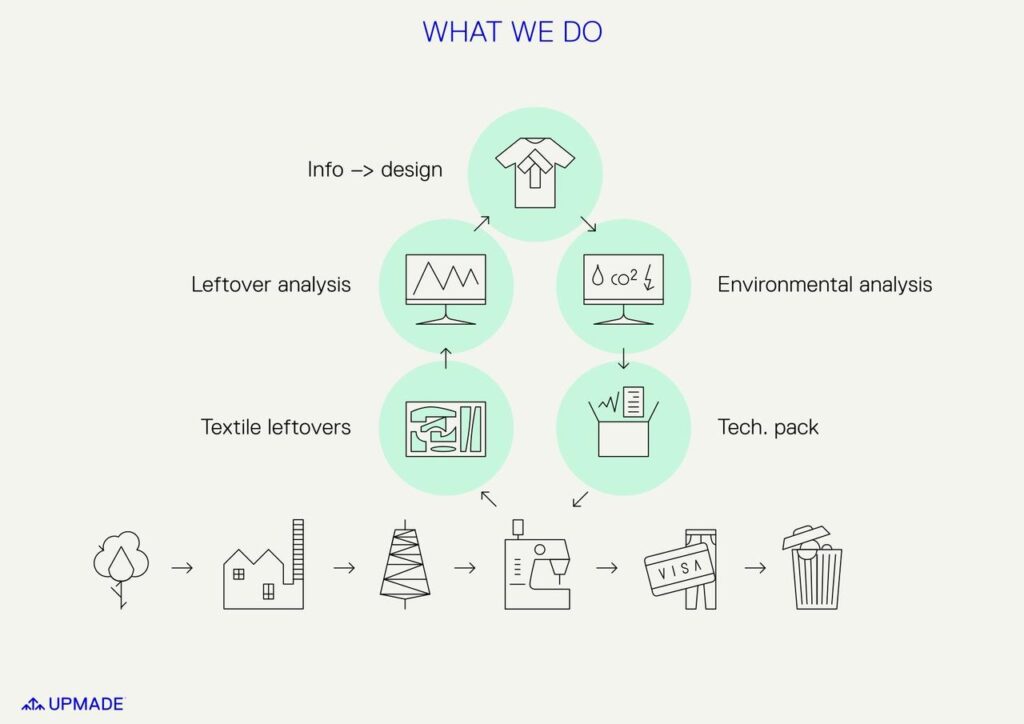
For manufacturers
UPMADE Certification gives a manufacturer independent assurance of its capacity to produce upcycled products in correspondence with quality, chemical toxicity and labour standards.
Certified manufacturers can attract brands interested in industrial upcycling. Manufacturers that have acquired certification for their production facilities are granted the UPMADE Certification.
For brands and retailers
UPMADE Certification gives brands and retail companies a choice between manufacturers who are proven to be able to deliver custom-made upcycled products. It also enables brands to be transparent with their customers, in a market that is seeking greater and greater transparency.
It is also good for the environment. Upcycling contributes to waste reduction which leads to energy, water and other savings by avoiding virgin raw material production.
Certification ensures that the supplier meets the demands of their corresponding markets in terms of quality upcycling design as well as labour and chemical standards with their products. Conformance to high standards are communicated by the UPMADE product identification label.
See more: upmade.org



